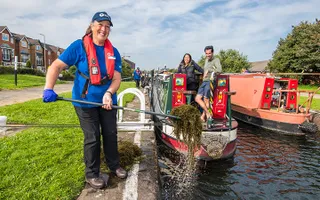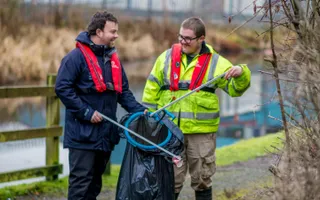I was born in Bolton in Lancashire, but have lived in the West Midlands for over 40 years. I came to lock keeping at the suggestion of my wife who saw something, somewhere, suggesting that British Waterways as they then were, were looking to recruit some volunteer lock keepers.
At that time, I had been retired from a career in the NHS as a general manager for some years and had done some volunteering, but I had never quite found something that suited me.
Lock keeping does suit me, it is a delightful and satisfying experience. The beauty of it is that you are out in the open air, getting exercise, assisting boaters operate the locks, in my case at Lapworth, in the company of some good friends, the other volunteers.
Common purpose
I have great freedom to work as and when I chose to, with minimal management supervision. It affords a great opportunity to meet interesting people, all of who have stories to tell while you work together on a common purpose, navigating a 200-year-old infrastructure. Such people provide great intellectual stimulation and pleasure.
Before I volunteered, I was aware of the canals in the middle of Birmingham, but I was not aware of the extent of the network. Now apart from lock keeping, I frequently enjoy walking along canals for a different perspective on the rural and urban landscape as well as the sheer pleasure of walking.
One thing I have learnt, from studying the history of the locks, is how the development of geology as a scientific discipline and civil engineering as a professional discipline followed from the pioneering work of the great canal engineers. One could argue that we would not have the railways and motorways without the canals coming first, maybe even the great material prosperity of the Victorian era.
Over the ten years, some things have changed and some have not. For example, the number of walkers has increased visibly and the balance of work done by directly employed staff as opposed to contractors and volunteers has changed as well. The number of boats and the condition of the physical infrastructure are little different.








